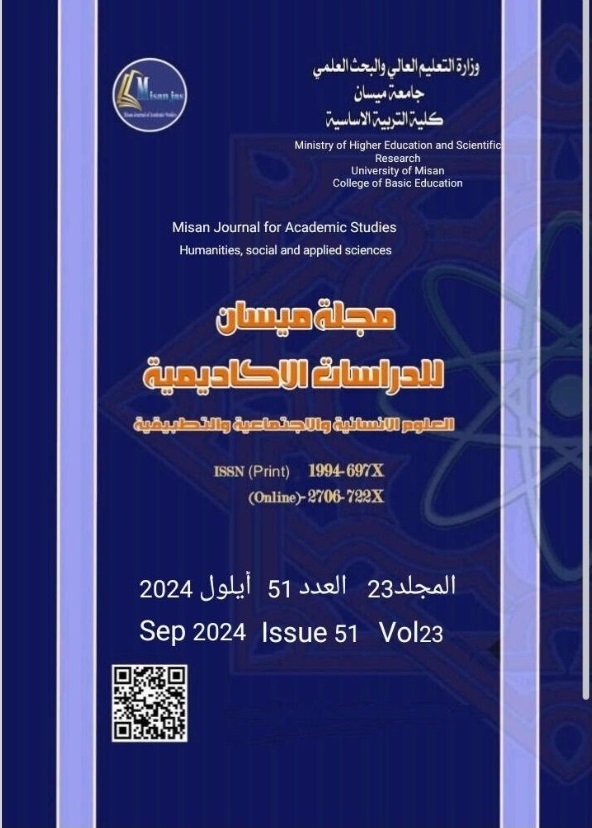The stylistic diversity that transformed the form and concept of contemporary visual arts.
Abstract
Closely, the stylistic diversity is connected to modern fine arts as a diverse technical movement that calls for change by refusing all forms of old traditions, values and norms. Thus, it refuses its reality, which is affected by political, economic, social and psychological aspects. Moreover, the reality leads to disintegration, self-destruction, and constant threat which are accompanied by anxiety and instability. The international artist revolted against society, language, sacred things, rules of mind and culture, and he or she opened up the fine arts with the works they contain (painting and sculpture) to their other arts to produce visual views that bear an alien characteristic and openness to the environment of its modern creative visual views. Due to the vital and aesthetic significance of this topic, the researcher sought to address it in her study. For this reason, the research problem was established according to the following question: (What is the stylistic diversity that changed the form and concept of modern fine arts?).
Based on the research question, the researcher formulated the significance of research and the need for it to shed light on the important aspects in which this study was prepared. Then, she prepared the aim of this study where the researcher sought to reveal the stylistic diversity that changed the form and concept of modern fine arts. Also, the researcher determined the objective, spatial, and temporal limitations of the research. In addition, the researcher defined the terms for the keywords of the research. The researcher mentioned (the cognitive framework of modern artistic methods) and (the philosophical rules that explained the development and diversity of modern artistic methods), including visual semiology and its impact on modern stylistic diversity. She mentioned the art of an event and image and the development of social media. The researcher discussed (the stylistic diversity adopted by modern artistic currents). The findings of the current study are: (1) The abolition of artistic naturalization in modern fine arts due to their openness to each other and the production of hybrid arts, (2) Stylistic diversity led to the diversity of environmental spaces with an open visual view and (3) the variety of methods and techniques that took on an alien characteristic which were used by the artist in most of his or her viewed works. Finally, the researcher presented the conclusions.
Downloads
Copyright (c) 2024 (Humanities, social and applied sciences) Misan Journal of Academic Studies

This work is licensed under a Creative Commons Attribution-NonCommercial-NoDerivatives 4.0 International License.
The copyright is also the copyright of the magazine only.
All articles published in our magazine are subject to license terms
Creative Commons Attribution(CC BY-NC-ND 4.0) This license permits the content to be reproduced, redistributed and reused in whole or in part for any purpose free of charge, without any permission from the author(s), researcher or student.
Works submitted to Maysan Journal of Academic Studies for publication in the journal (CC BY-NC-ND 4.0) license terms. Where available content can be shared, distributed and replicated provided there is no commercial profit and appropriate credit must be given to the original source through sources or citations. It is mandatory to review any material used from other sources including shapes, tables, and images for re-use under the terms of the Creative Commons License (CC BY-NC-ND 4.0).Provided that there is no modification to the original content



